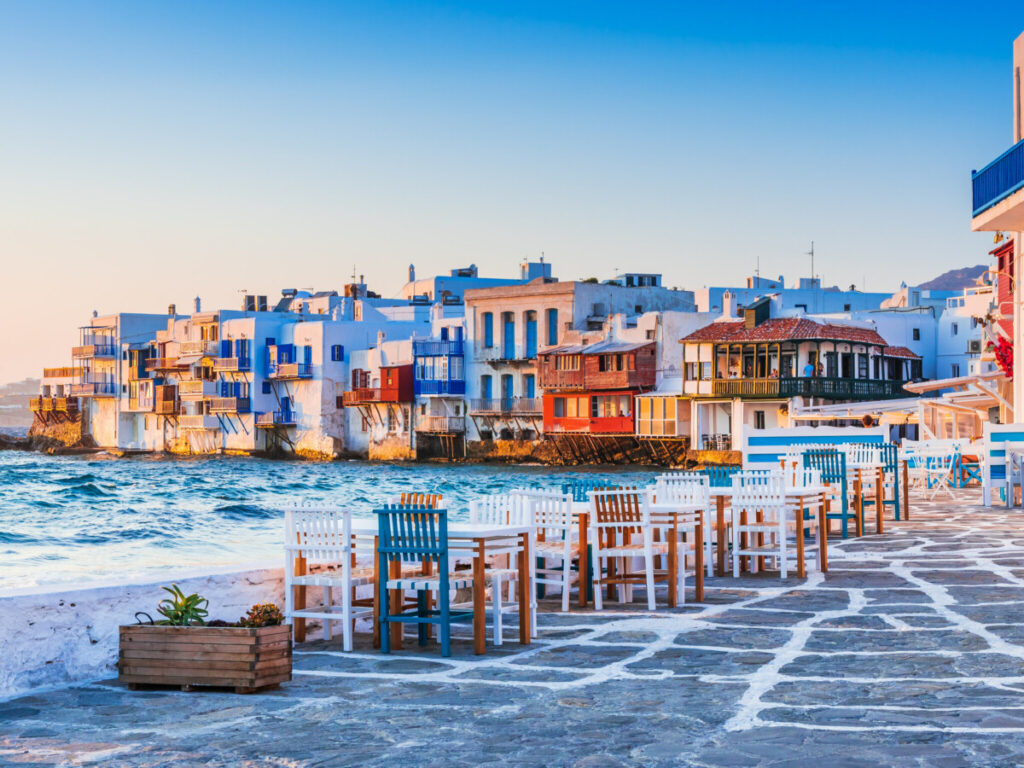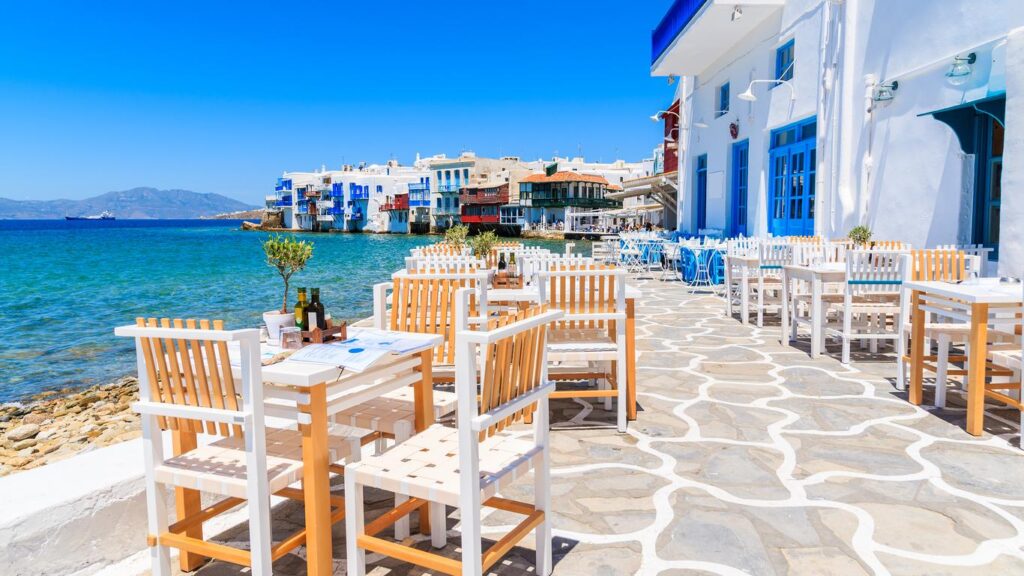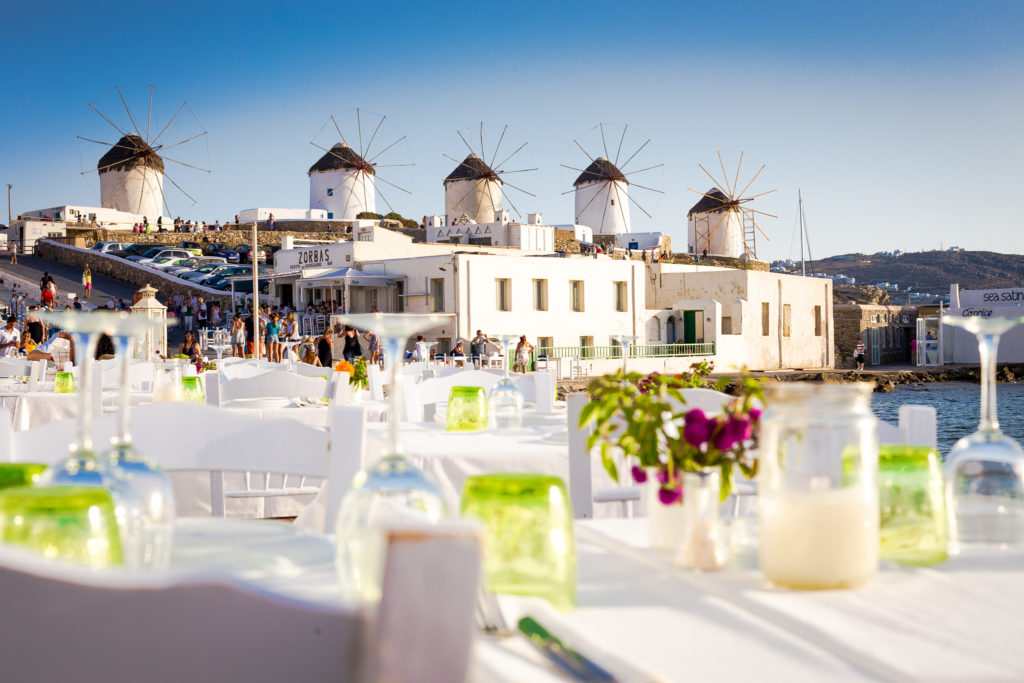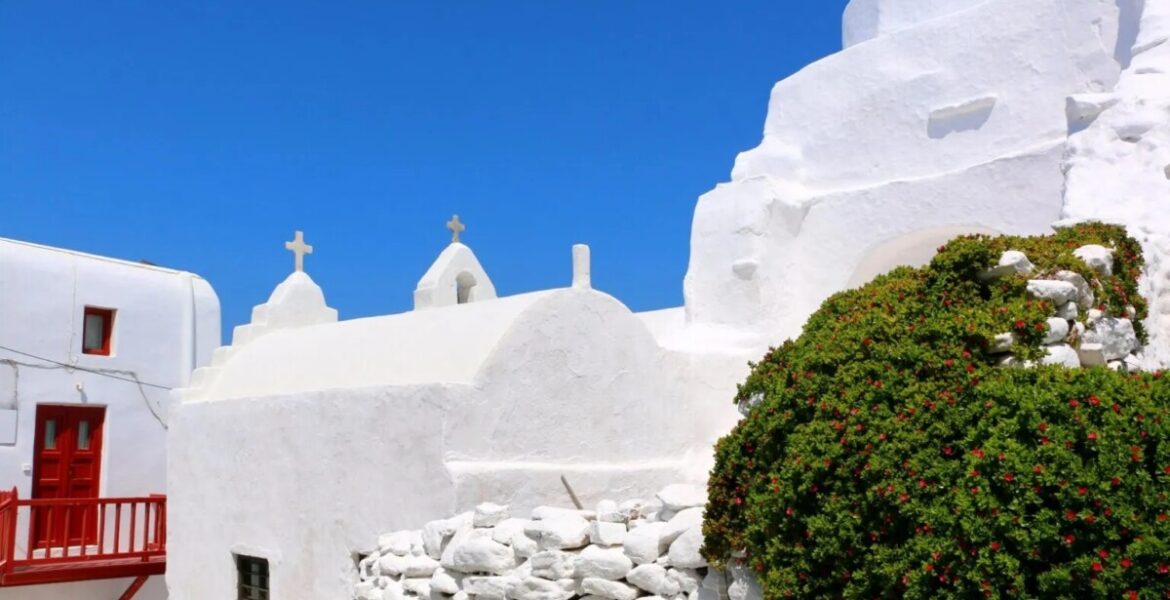Chora is one of the most beautiful towns in the Aegean and one of the great pleasures of Mykonos. The white cube houses and traditional Cycladic architecture have retained their island charm - blue-domed churches crown narrow whitewashed streets while jasmine-scented alleys frame sunset views over the windmills at Kata Myli.
A different side to Mykonos

As the sun lowers over the waiting Aegean, the gaze of the island turns inwards to the sparkling lights of town, the ‘string of pearls’ as Mykonians know them, Travel wrote. Throngs of visitors move down Matogianni, passing designer brands presenting their latest collections, accessory boutiques, and jewelers. Restaurant tables spill onto the narrow alleyways and bars blast music over the conversations of scores of different languages. After midnight, the night owls and gilded youth come out to play; a sexy, flirtatious crowd dressed to the nines and eager to dance into the night.
The following morning, Chora wakes up late. Find yourself in the labyrinth streets at this time and Mykonos presents a different face to the glamorous partygoer of the night before. Street cleaners clear up the mess from the previous night and delivery drivers hound around the small streets dropping off fresh produce and supplies.
Grandmas in black headscarves return from market with stuffed carrier bags and bleary-eyes hide behind sunglasses over breakfast coffees. Sleepy and serene, this is the island refreshing itself before the headlong charge of another night begins. Look out for the Tria Pigadia, the three wells; legend has it that a man who drinks from all three will marry a Mykonian woman.
Church of Paraportiani

Mykonians claim there are 365 churches on the island, one for every day of the year, but the finest is Paraportiani, a true Byzantine jewel. One of the most photographed churches in the world, the whitewashed edifice stands on a promontory facing the sea. Dating back to 1425, it is actually five different churches melded into one, and gets its name from a gate in the medieval castle walls.
Little Venice

Many early ship captains built elegant houses here with elaborate balconies hanging over the sea. The neighbourhood is known as Alefkandra as this is where the local women came to do their laundry in the 18th century.
Enigmatic, colourful and romantic, a favourite Mykonos experience is to enjoy a drink in one of the bars that now inhabit the buildings; in the evening couples sit hand-in-hand as the waves patter at their feet and the sun sinks below the horizon.
The Windmills

Across the water from Little Venice, set on a hill, are one of the landmark images of Mykonos. Barren and unforgiving, the island produced wheat and legumes that were sold to passing ships and the white, cylindrical mills with light sails and thatched roofs were used to grind grain until the early 20th century.
The Pelicans

The mascot of Mykonos, the Pelicans feature on many postcards sold around the town. In 1958 a group of migrating Pelicans passed over Mykonos, leaving behind a single exhausted bird. Nursed back to health, the bird was named Petros and soon became an island attraction. A flight to neighbouring Tinos saw the issuing of a lawsuit and a return home but in 1985 Petros was hit by a lorry and died. Jackie Onassis sent a replacement and now a small colony has been established.
In 1822 during the war of independence, Manto sent an armada of 24 ships to repel the Ottoman overlords. A scandalous love affair, very Mykonian, saw her exiled to Paros. Also known as taxi square for obvious reasons, it is the hub of the island with a bust of the islands heroine to remind of its torrid past.
READ MORE: Anafiotika, an insular neighbourhood below the Acropolis.


